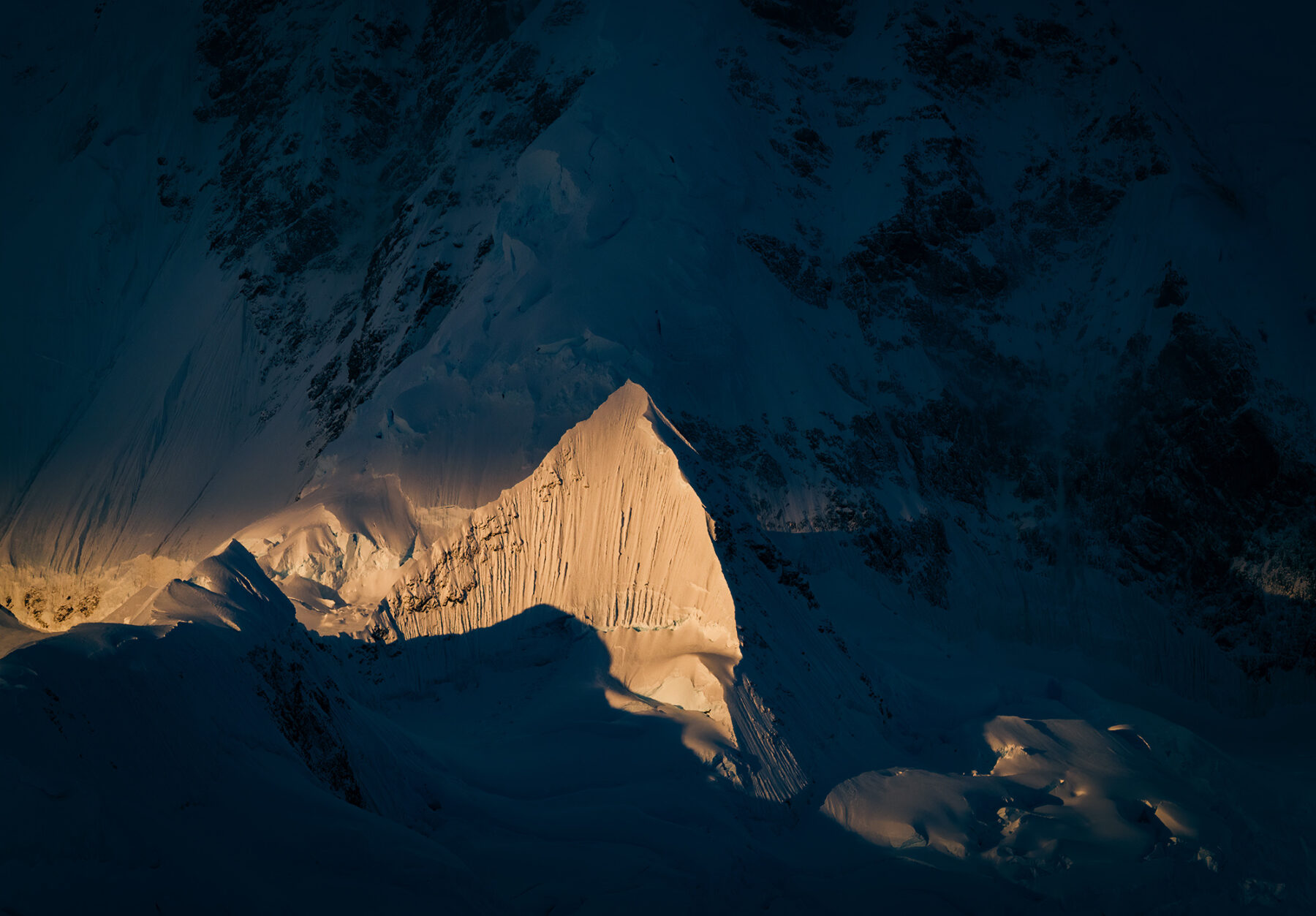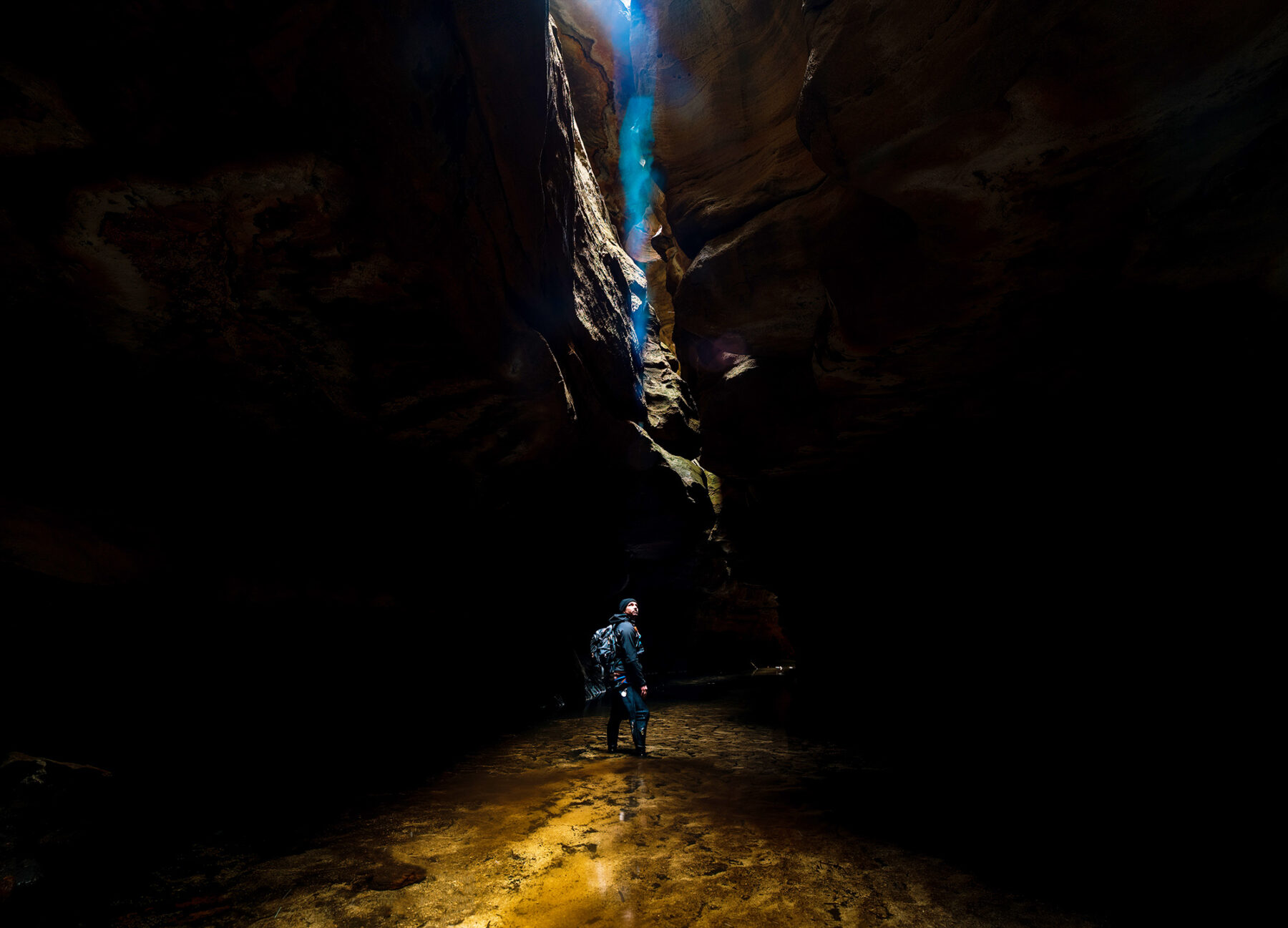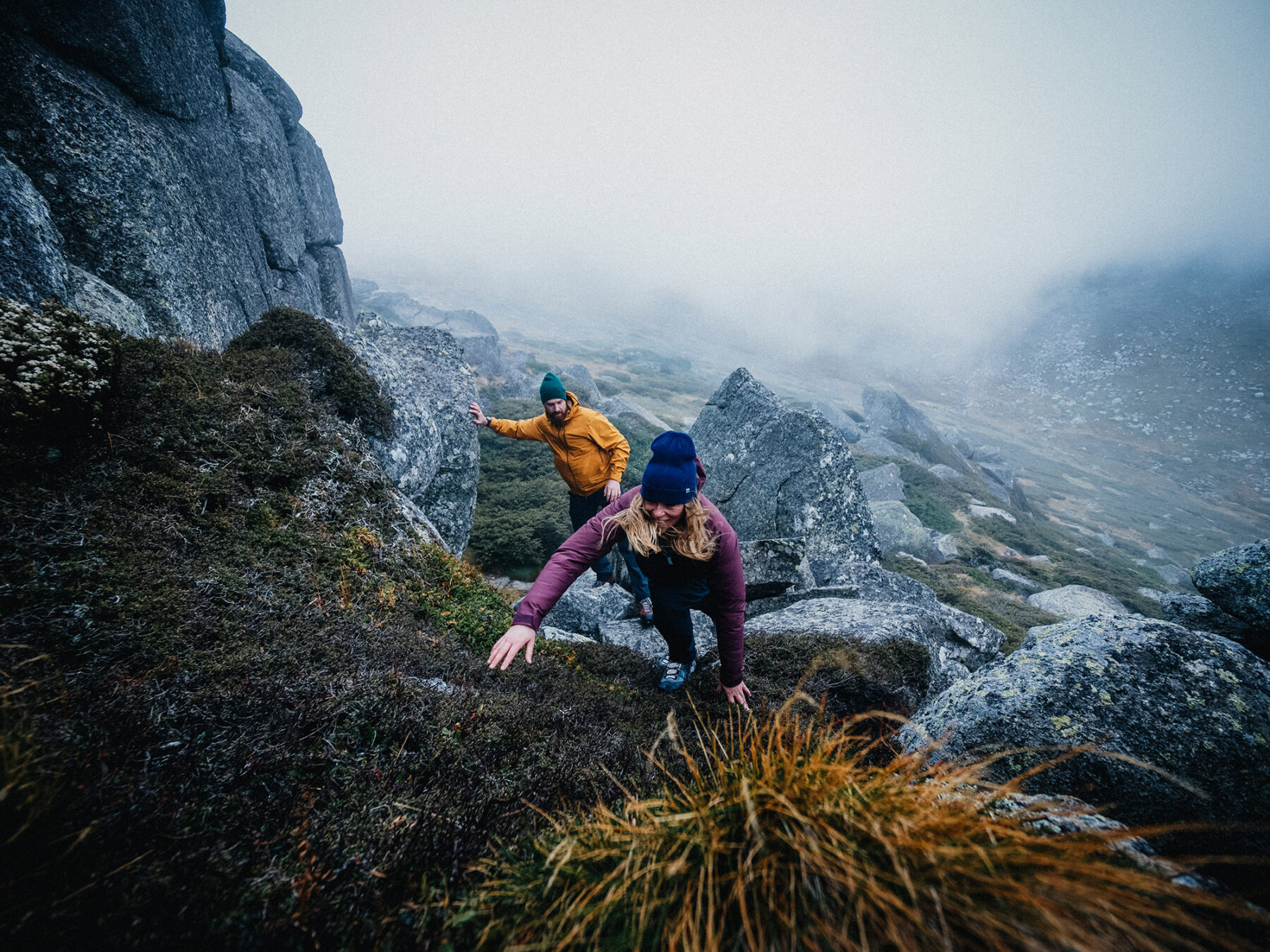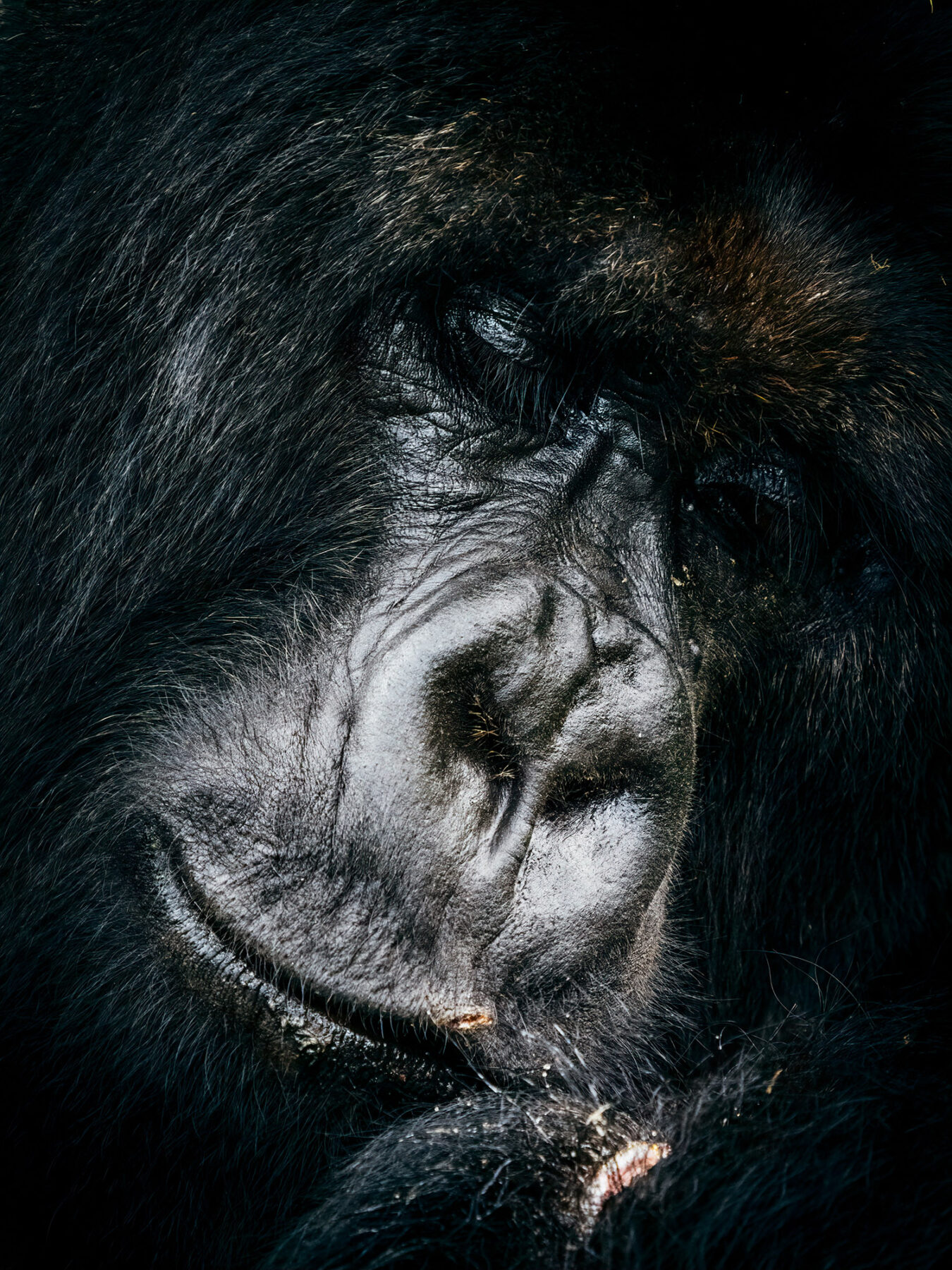Most Australian outdoor enthusiasts would have seen OM SYSTEM ambassador Matt Horspool’s captivating adventure photography. From extensive, remote-area photoshoots for brands such as Mountain Designs, Fjallraven, Ford Australia and tourism boards, through to long stints as a photography guide for Antarctic/Arctic cruise companies, Matt’s unique imagery has helped sell that dream of how much fun can be had in the outdoors. Talent is the main reason, but talent needs to be backed by plenty of hard work…
An outdoor childhood and a very big adventure
Matt was adopted at six months of age, moving from South Korea to the picturesque NSW central tablelands town of Orange where he grew up surrounded by outdoor adventure opportunities, which he loved.
“Dad was in a bushwalking club, and I just went with him from when I was little,” Matt recalls. “So, it was just, from a very early age, I loved being out in the bush. Orange has obviously got beautiful forestry and bushwalks around there. So, we were up in Mount Canobolas all the time, hiking.”
School at Orange was followed by university, before wanderlust hit the young Matt Horspool and, rather than returning to Orange, the bigger, wilder world called, and that calling came from Simon Yates, the British climber who had, from the mid 80s, been known as “the man who cut the rope”. Yates and fellow climber Joe Simpson had been climbing in the Huayhuash region of South America when Simpson fell over a cliff edge and Yates, thinking his partner had died, cut the rope that connected them. Simpson survived, and that story became the award-winning book and film, Touching the Void.)


Yates was returning, for the first time, to the area of the accident, guiding a 20-day World Expeditions trip. Matt trained for this adventure and joined it. This mammoth trip (an impressive feat for a first-up trekking experience) instilled the adventure travel bug in Matt and, straight after, he visited Peru where he tackled the Inca Trail, then continued travelling through other South American countries, such as Brazil, before heading south to Patagonia. And, with him, came a basic point-and-shoot camera. The photo bug was about to bite…
One small camera kicks off many memories
“I’d never been into photography at all,” Matt recalls of that period of his life. “But I just fell in love with taking photos of people in the mountains, and just the aura of seeing the scale of our little yellow tent to the background of everything. I thought, this was pretty cool, and then, just kept taking photos.”
Matt not only photographed many outdoor adventures in South America but was also hooked on capturing people and culture in all the countries he visited, even though it was using a basic camera. Returning to Australia, Matt went to work for six months but the world was already calling him, with him again leaving our shores to explore the world, but this time for a lengthy three and a half years.
As his camera gear became more sophisticated (he moved from mirrorless to full-frame DSLR), and his photographic expertise improved, he was garnering a loyal following for his images, and the thought struck that, maybe, his burgeoning passion could become a career.

“When I got back to Australia, I thought, ‘This is something I could maybe do, and get paid’ because I was asked to do a charity event at a golf course, and I shot some good stuff for that. Then I got asked to do a wedding, and it’s like, “All right!”
Matt also fell into the common trap of thinking he needed a full-frame DSLR (full-frame denotes the camera sensor being the same size as a 35mm film negative/slide) to produce professional imagery, but soon found that the sensor size does not matter if your camera gear does not function in challenging outdoor conditions.
“After hiking around for a bit with the full-frame DSLR, using it on various shoots, I went to Minnamurra Rainforest, and I just had endless trouble with moisture getting in. I was like, ‘There has to be a better way.’
This frustration continued until 2016 when camera company Olympus, announced the Olympus Vision project. Little did Matt know when he applied for some of the funding for this project, that it’d set him on a journey with one of the world’s famous camera brands…
The tipping point into a forgotten world
“The Olympus Vision project was a grant, rather than a competition, but you still had to apply,” Matt explains. “There was $100,000 funding and you could apply with whatever you wanted to do.”
Matt applied twice – once for a project based in Poland and the Ukraine, and the second time (with a friend, Kel) for an epic road trip adventure through Kyrgyzstan and Tajikistan. It took a month of research, building their own unique trip that the duo thought would give them the best chance at the grant. And it worked…
“I still remember the day I was at school teaching, and I got the call from Ante [Ante Badzim is Marketing Manager of OM SYSTEM)] and I just left, walked out, and took it!”

For Matt, sharing a portion of the $100,000 (the prize was split with other successful applicants) on offer was the tipping point for his move into photography.
“That phone call was pretty much the turning point, or the start of my career, I guess, because while it wasn’t paid, the shots I got from there, just not only instilled confidence in me, but it was the best trip I’ve ever done, and most amazing place I’ve ever been. And the shots were so successful; it kind of just pushed us forward. So yeah, it was good!”
The Olympus Vision trip across Kyrgyzstan and Tajikistan was spectacular, further cementing Matt’s love for adventure and outdoor photography.
“Seeing the mountains, and having no people around, living in the yurts with the families, and being in one of the world’s most remote places (apart from Antarctica) I had ever been, that was a life-changing thing.”
Closer ties and tougher cameras
The Olympus Vision trip was not only life-changing, but it strengthened Matt’s ties with Olympus, where he was soon considered a pseudo-ambassador, being sponsored for a number of the brand’s projects based around the company’s camera system that has, with its use of micro four-thirds sensors, based its appeal around its cameras’ ruggedness and compact size and weight – in other words, a system that is ideal for adventurers and wildlife photographers. Sponsored assignments included to India and New Zealand.
Olympus sold off its camera business in 2020, with the cameras being now under the OM SYSTEM moniker and, far from seeing them disappear from the market, the brand has forged ahead, successfully launching a series of increasing tougher, more rugged and more powerful, cameras, with the 2022 launch of the OM-1, and its recent successor, the OM-1 Mark II. This camera represents the OM SYSTEM ethos of producing a tough, compact and powerful interchangeable lens camera, with an IP53 rating for weather-sealing (no other camera on the market has this rating). Even though he wouldn’t openly suggest it, Matt has even washed off his OM SYSTEM camera in a shower; something that would, for most photographers, induce immediate panic! For Matt (now an official OM SYSTEM Ambassador) and the work he does, it’s the perfect match for the toughest conditions and, most notably for Matt’s job as a polar photography guide, in the world’s coldest regions.

“I’ve told people, and tell people this all the time, not just because I’m biased towards the brand, but there is no better camera than the OM-1 for polar photography, because of the weather sealing, the size and weight – especially as a [photography] guide,” he says.
“Most of them [other photographers] just have one camera in their neck, which is big, but I can have two, and still with less weight. And to have the M.Zuiko 150-400mm IS PRO [lens] attached to one body, and be able to have my M.Zuiko Digital ED 12-100mm f4.0 IS PRO attached to the second body, on the other side, every range of shot is fine to capture. And being able to use such long telephoto lenses down there works better in the cold, because you don’t have the atmospheric heat.”
The wildest places in the world
When you’ve been to some of the most remote parts of the world, it’s hard to pin down any favourites, such as his first big trip through Kyrgyzstan, but Matt does have a few more – plus plenty of others still on his bucket-list – thanks to his ability to shoot not only plenty of outdoors, wildlife and adventure, but commercial projects, too.
“India, because of the culture, the colour and the history, and just the chaos of it. I love being in those environments, that most people would feel really uneasy, but I feel there’s so much energy in there, and Holi was a natural place to go for that. It was just nuts. So that was memorable, and those shots, I feel, I still look back on them, and I need to post more, because I just love that whole culture side,” he affirms.

“Holi, going to the Phoolon Wali festival, which for 20 minutes, has close to a million people push through the doors of the Banke Bihari Temple, is just crazy. There are four doors, you line up for hours. And then, it’s open for 20 minutes. It’s the wildest thing I’ve ever been part of, but the crush of the crowd… My phone got shattered in my pocket from the weight of the people pressing on my leg…
Matt also notes one of his most famous photos was taken during all the chaos. “The adrenaline, when we got into that room, and the shots we got there, so that one at the temple with people moving around that, that’s in that spot there,” he says. “Nat Geo featured that on The Most Colorful Places in the World. That was probably my favourite shot I’ve ever taken. That was in there, because I planned that shot in my head, when Live ND first came out on the Olympus E-M1X.
“I said, ‘I’m going to get motion with people here’, and yeah, stretched out over a balcony with one hand, filming a quarter of a second shot. So that was a testament to the technology of the camera there.”


Another favourite is the great southern continent. “Antarctica, obviously, it’s a pretty special place for the wildlife,” he says. “And just shooting it was really good. But going down there and working as a guide, that has been my favourite paid job. And it will continue to be, I think, for the rest of my life, as it is just so rewarding to be showing other people this place and helping them capture awesome photos. That is, of course, easy to do, because wherever you point your camera, it’s bloody beautiful.”
Many images still to come
As with many professional image-makers, Matt not only shoots still images but also lots of video. In fact, he estimates his commercial workload as close to evenly split between video and stills, with him utilising a range of gear, depending on the type of shoot, with a recent Arctic assignment requiring a dedicated video camera, as well as his OM-1 Mark II doing double-duty as a stills/video camera for wildlife with OM SYSTEM’s famous M.Zuiko 150-400mm IS PRO ‘big white’ lens.

As for other future destinations on his list, Matt is keen to explore more of central and west Africa (he has previously done a photoshoot for Rwanda Tourism), specifically naming Virunga National Park, in Congo, as one destination, thanks to it containing the world’s largest lava crater. He also sees himself returning as much as possible to Antarctica, in his role as a photographic guide, with the caveat of shorter trips for now, as his two young children take up plenty of his time – something he enjoys immensely.
Still the beginning
Matt’s story is an incredible one; from growing up in regional Australia, to travelling the world, to photographing and filming in some of the globe’s most remote areas for a variety of clients from outdoor brands, Aussie (and international) tourism boards and car companies. In often trying conditions, he has shown that, through hard work and a dedication, any dream can come true.
It is image wizards such as Matt who help inspire and motivate us ‘everyday’ people to pursue our own dreams, and that’s something we should all say thanks for, each and every time we see one of his images, knowing how much work has gone into capturing the wild and crazy world we love.
Go to ETCHD Photography to check out more of Matt’s inspiring images and video.
Go to OM SYSTEM to learn more about the company’s cameras and lenses.



